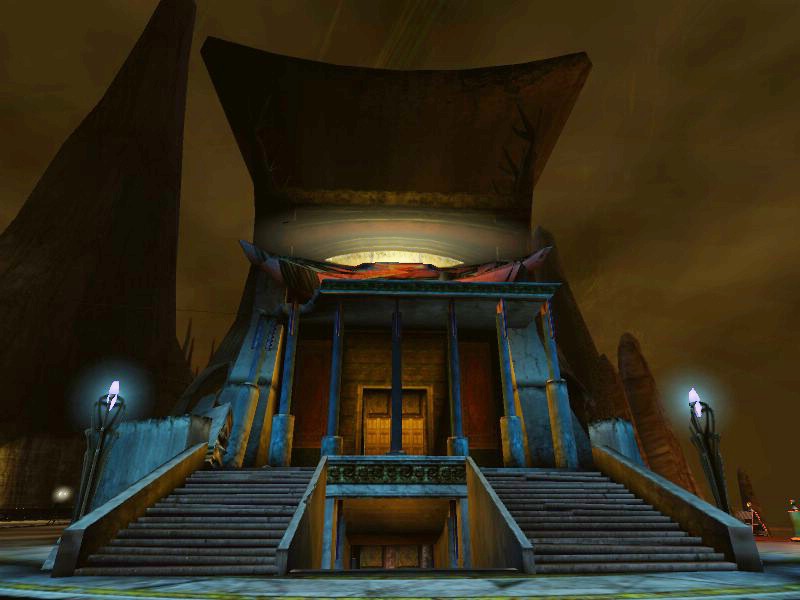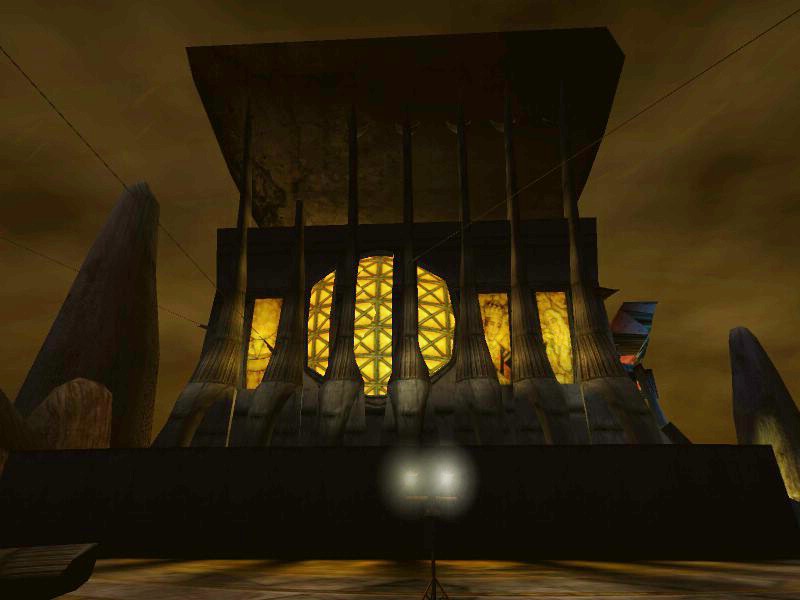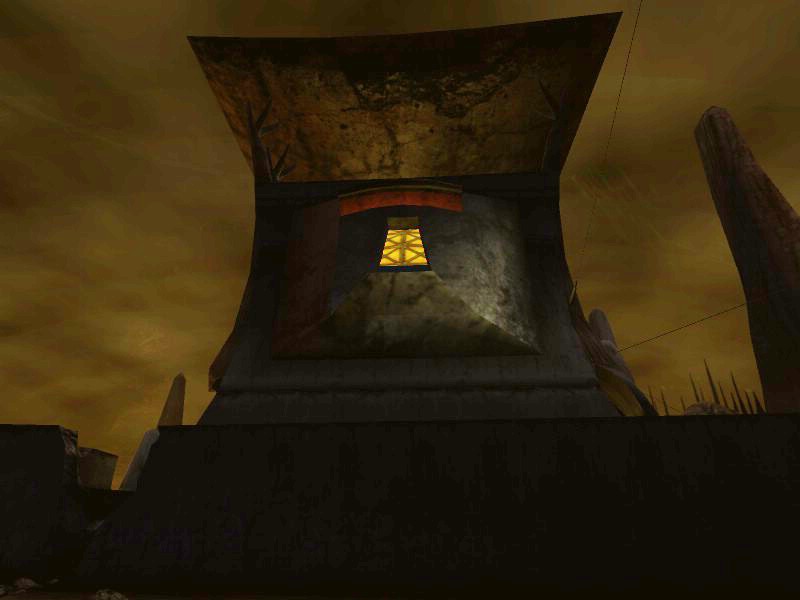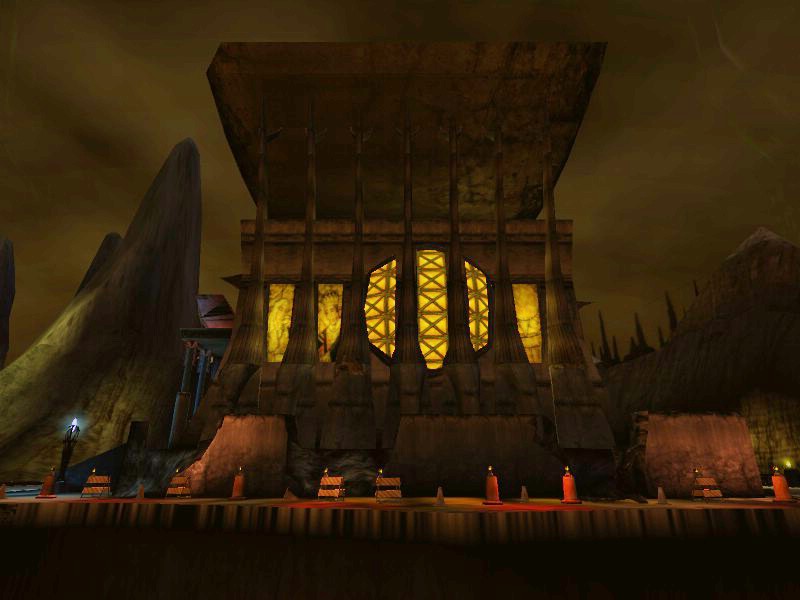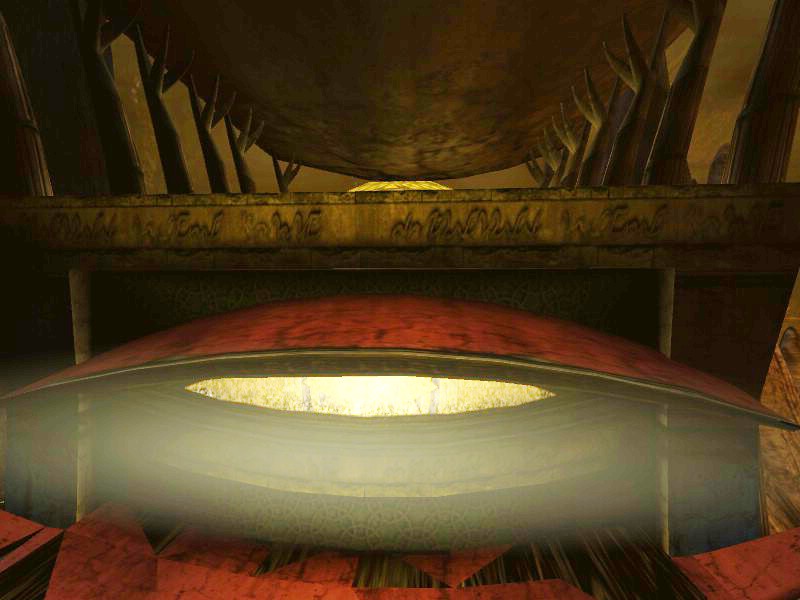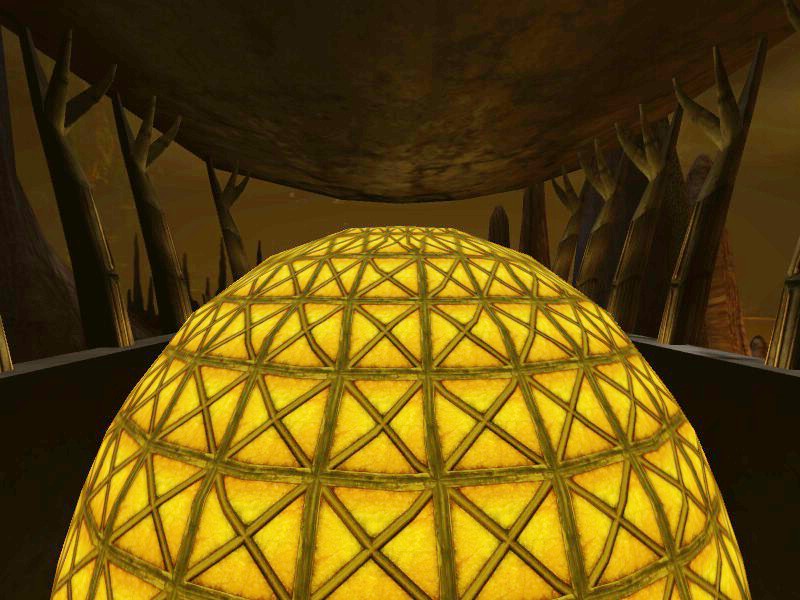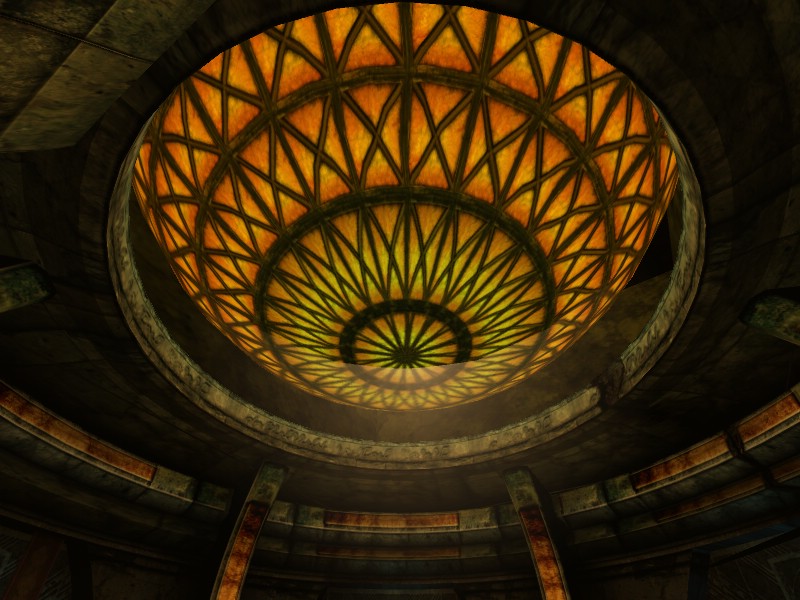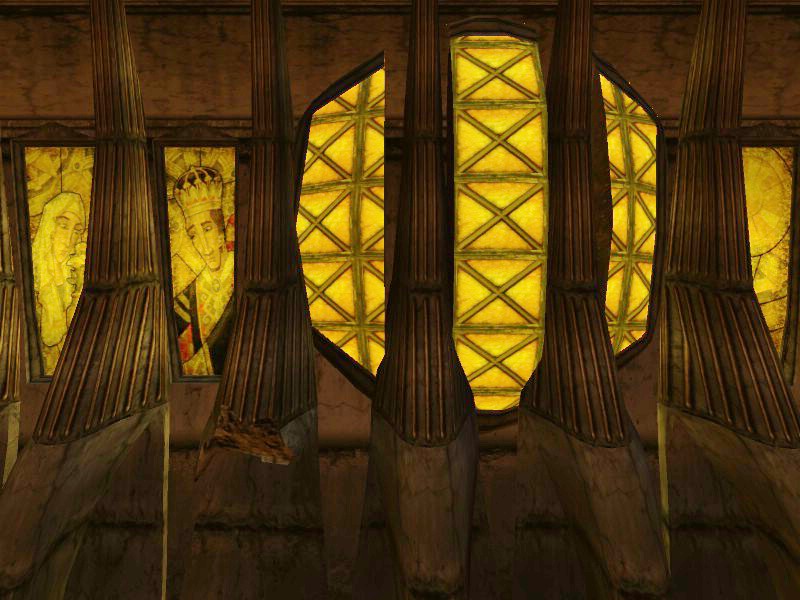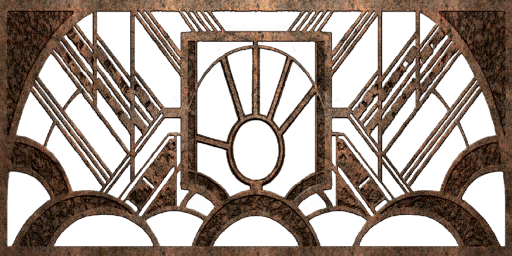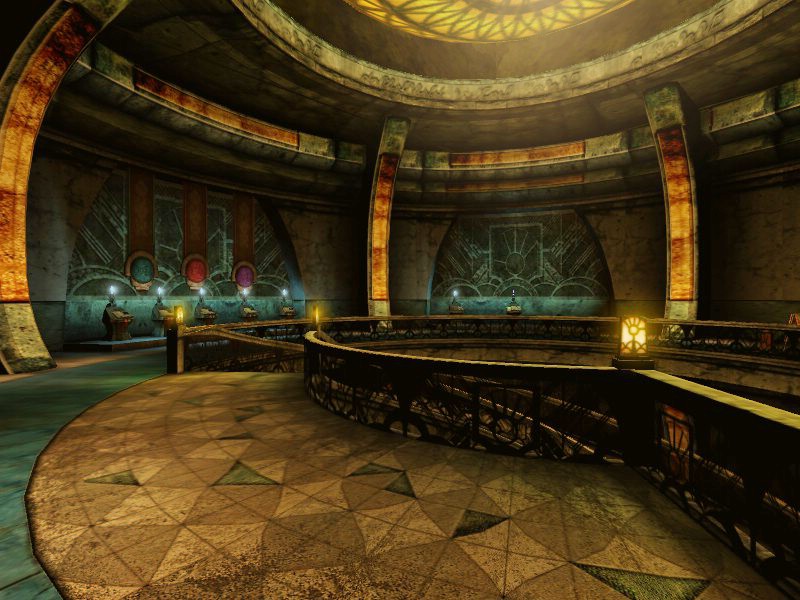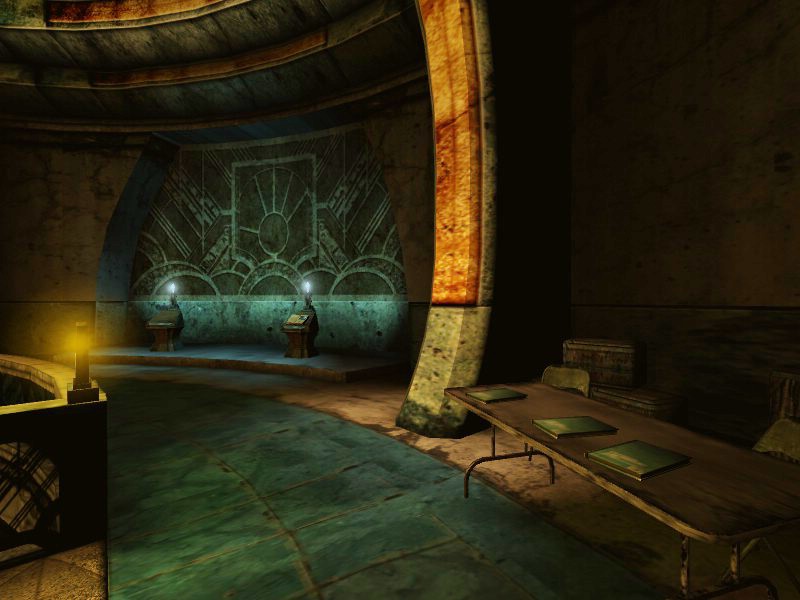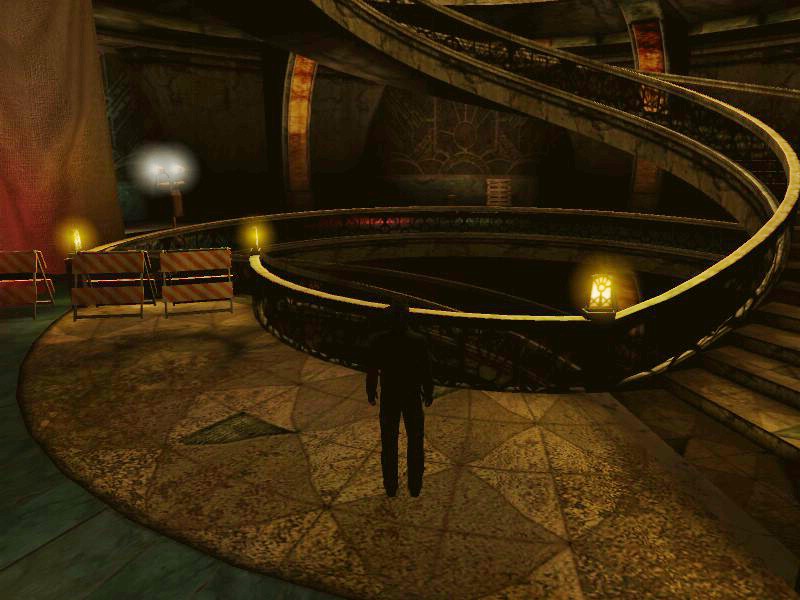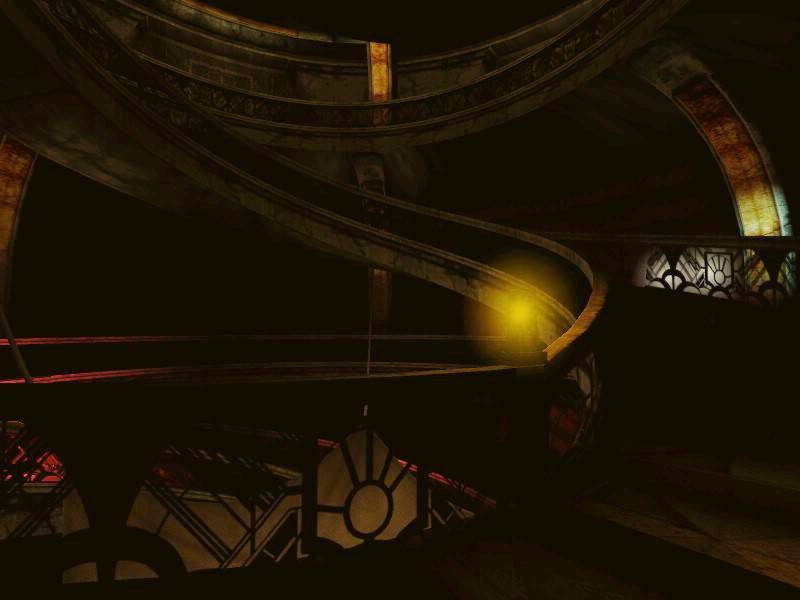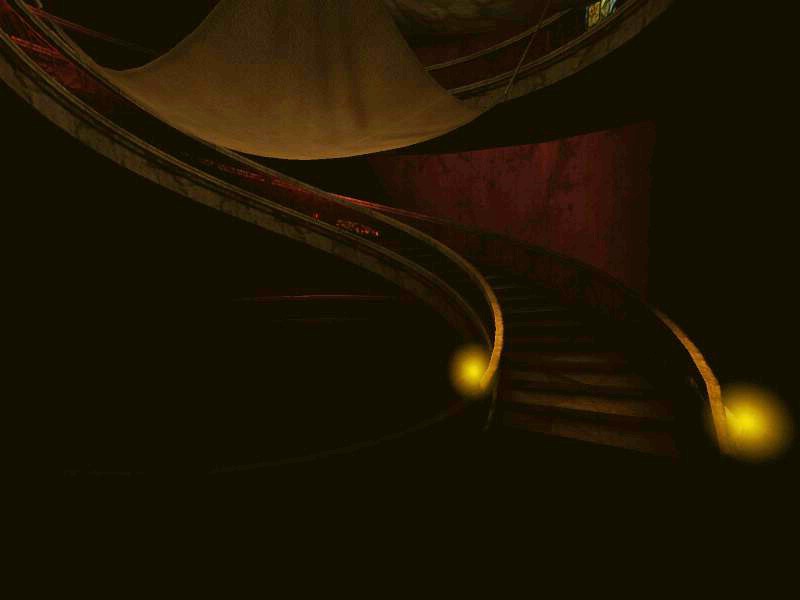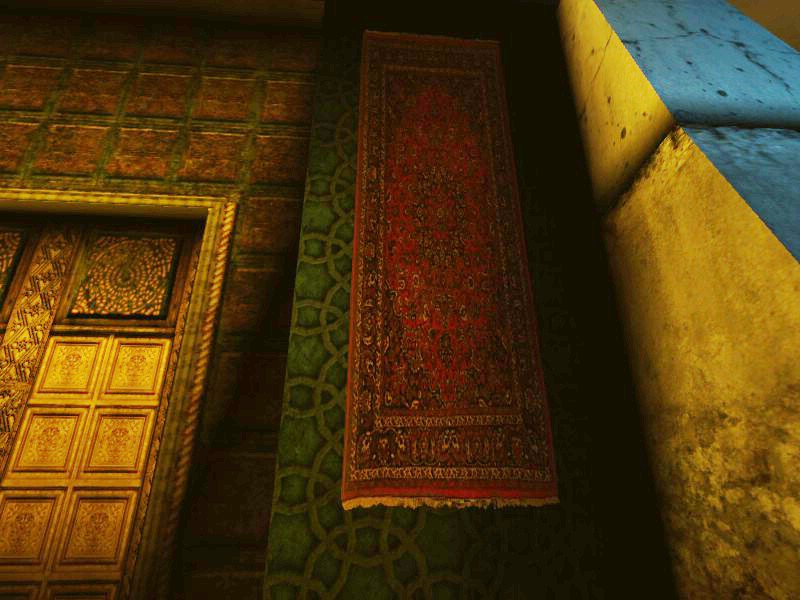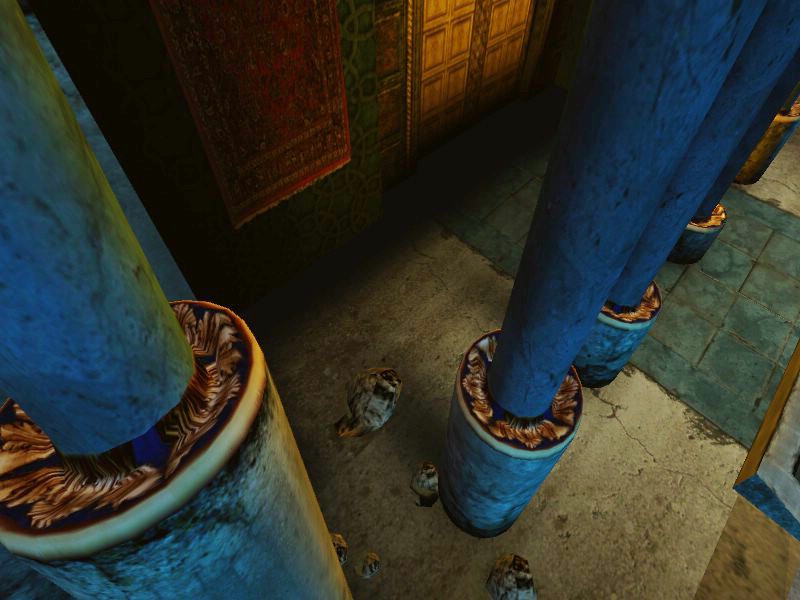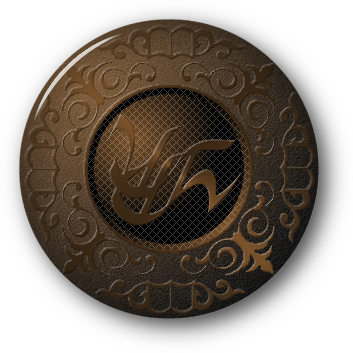

|
|
The Great Library on the northwest end of Ae'gura is the largest common library we can visit, but it's only one of many. The Common Library built by the command of the second king of D'ni, Ālesh, is probably larger, and there are small common libraries in every residential neighborhood. The museum on Ae'gura Island is also a common library that may have held twenty linking books at a time, although it was devoted to a single Age. A common library is best defined as a collection of linking books that any citizen of D'ni could use freely, without needing to ask permission. It is the collection and its accessibility that defines a common library moreso than any structure built to house it. On the other side of the coin, there were private libraries owned by the rich and powerful that only they and those they invited could use. The library on Ae'gura is surrounded by a large plaza called the Library Courtyard, and is approached through a circle called the Library Overlook. A Nexus terminal is located to the left of the entrance, behind a tent set up by the DRC. On the harbor side of the library, a section of the courtyard became undermined over the course of time and collapsed into the harbor, the missing sections of which can be easily seen at the bottom of the cliff. That collapse was a recent event, having occurred on March 12, 2002. The DRC was present at the time, and said this about it in their web site:
The origins of the Great Library are unknown. There used to be a theory that it was commissioned by the second king of D'ni, Ālesh, and completed in DE 233. The idea arose from this passage in the Ālesh notebook:
However, the Common Library Ālesh commissioned was built in the D'ni City, not on Ae'gura Island. It was intended to display linking books for the lower classes of D'ni to use, so placing it on the "privileged classes only" Island wouldn't have been a very good idea. A library for the common man isn't going to do much good if commoners can't go there. The following sketch shows the Common Library Ālesh built.
The Common Library in the D'ni City was filled with linking books that were basically rejects that were unacceptable for the upper classes. King Kedri, the man who had Shamathen built, visited the Common Library. This is an excerpt from his notebook.
It wasn't until about 3702 DE that the only residential district for commoners, Shamathen, was built and commoners who worked in the government were permitted to live on the Island. However, that didn't mean the upper classes wanted them underfoot, so only the residents of Shamathen were welcome. Sometime after 5473 DE, king Me'emen proposed using Stone Eater and Stone Tooth to dig a tunnel from the City to the island to cut down on the need to wait for ferry boats or use private ones. The idea was soundly shut down by the elites, who apparently felt that it would make the island too accessible to lesser mortals. So we really don't know who built the Great Library, when, or why. We don't even know what was kept in it. The two books found there now, Jalak and Minkata, were placed there by the DRC after they passed Phase 5 approval. It's not known if they were found in the Great Library originally. Ālesh was the first to create a common library, but not the last. It became a fairly typical practice for kings, nobles, and government officials to commission linking books for public distribution to gain popularity with the common people of D'ni, and to build common libraries for them to be kept in. These Ages were generally places the D'ni liked to go to break up the monotony of living in a cave system. Views of the four sides of the Library: This is the front, and faces east. There are two floors above ground, with the doors at the top of the steps opening into the first.
This is the south side of the building.
This is the west side, and is the rear. You can see a door that opens into the second floor; the top curve of the central illuminated ball shows through it.
This is the north side of the building, and is the side where the courtyard collapsed in 2002.
On the front of the building is a lens that projects the light from the illuminated glass-paneled ball behind it. Above the lens is an inscription of the same welcome message found on many other places around the island.
The Library is a multistory building. The doors into the upper floors are locked. The first level below ground, which was the main floor of the Library, consists of a large room with a central shaft and stairwell leading down to lower floors. Currently, only the main level and a landing on the floor below it are open to explorers. There are a total of five floors below ground level if you include the main level, giving the building a total of seven stories. The above ground portion of the building has a canopy roof, and is dominated by a light sculpture consisting of an illuminated ball of glass panels. The bottom of the ball forms part of the ceiling of the main floor, and that portion is surrounded by a decorative molding with the city welcome message repeated around the circle. The large doors into the upper level of the building may just be maintenance access for the ball, or may open into storage or office space. On the rear of the building, there is an open doorway high on the building, which opens into the second level. It exits on a sheer drop to the plaza. This door is visible in the picture of the rear of the building posted above. Stained glass panels of a crowned man and a veiled woman grace the both sides of the library, along with a panel with geometric patterns. No information about the panels has been found to tell us who the portraits represent. The stained glass panels:
Views of the illuminated ball:
This is the bottom of the glass sphere. The ring around it has the Island welcome message, rebantano tānēen shemtē, repeated several times.
The stained glass windows:
The floors below ground are divided into five niches, each of which can hold up to five pedestals for linking books, although the main floor's entrance doors use up one of the niches. Most explorers will see eight pedestals in the niches of the main floor, only two of which have linking books. In other instances of the library, more have been found. The walls and railings are decorated with a rayed hand design identical to those found in the Ae'gura museum building. This is a frequently used theme called the Hand Tree.
The first pedestal one reaches walking clockwise holds a book linking to Minkata, and there is a notebook listing the surveyor's routes which Yeesha co-opted for her fourth Journey. Minkata was a training ground for the D'ni Guild of Surveyors, and the Age was used to teach apprentices how to follow a route by dead reckoning and how to navigate by the stars. The second pedestal links to Jalak, and a notebook written by the DRC lists several games that can be played there. No one knows what the D'ni used it for. It probably was not an arena of any sort, as there are no seats on the surrounding walls. There are what appear to be windows piercing the walls in places, but there are also no doors into them or any easy means of access to the tops. On a table near the door are three notebooks with stories about events in the lives of a few of the kings of D'ni. The first story is about King Kedri, who made several changes to the city. The second story is about King Me'emen, who was ruling when a serious plague struck D'ni. The third story is about King Me'erta, and his mother's attempts to change the oath of the Guild of Writers, and who released the second Pento Plague on D'ni. Main floor:
Second floor down:
Third floor down:
Fourth floor down:
Fifth floor down, final stop. Little light makes it down this far, due to the tarp across the shaft. It's impossible to see if there are any notable features to the floor. It probably looks just like the others, though.
Extensive damage was done to the library building by earthquakes. Several ornamental lamp pillars have toppled, large cracks have appeared in the exterior walls, and a portion of the right rear of the building broke away. Despite the damage, the building appears to be structurally intact. A tapestry hanging next to the upstairs doors:
Blue and gold decoration on the support pillars around the doors:
|
||||||||||||
Myst, the Myst logo, and all games and books in the Myst series are registered trademarks and copyrights of Cyan Worlds, Inc. Myst Online: Uru Live is the sole property of Cyan Worlds Inc. The concepts, settings, characters, art, and situations of the Myst series of games and books are copyright Cyan Worlds, Inc. with all rights reserved. I make no claims to any such rights or to the intellectual properties of Cyan Worlds; nor do I intend to profit financially from their work. This web site is a fan work, and is meant solely for the amusement of myself and other fans of the Myst series of games and books. |


